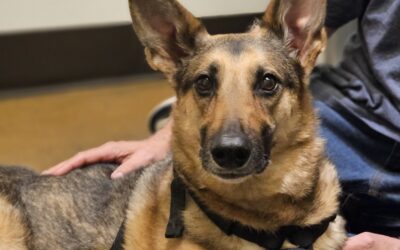
Housing and enrichment for rabbits

Evolution of rabbit housing practices
The domestication of rabbits is closely linked to the practice of keeping them in small enclosures known as hutches. In these conditions, rabbits are often kept for a couple of months, occasionally 1-2 years. To ensure a longer lifespan, it is crucial to provide enough space with enrichment to create a stimulating environment for the rabbit’s physical and mental health.
Space requirements
Enclosures should allow rabbits to exhibit normal behaviors such as hopping, running, digging, stretching, both horizontally and vertically, hiding, exploring, playing, and grazing. The space and items within it are essential to encourage these behaviors. It is suggested that a rabbit’s enclosure should be at least three to four hops long and allow the rabbit to lie down and stand up without crouching. Having an exercise area is crucial as rabbits are most active during twilight hours. It is recommended a minimum enclosure size of 3m in length, 2m in width, and 1 m in height for two rabbits.
Temperature regulation
It is crucial to regulate the ambient temperature, maintaining it between 15 to 24°C. Temperatures above 22°C can reduce food intake, and thermal stress is observed at temperatures above 27°C, significantly impacting rabbit welfare.
Comfortable and stimulating environment
The enclosure should have a comfortable area where the rabbit can lie down, with a substrate that promotes grazing activity. Small hay racks can be used, but rabbits generally prefer eating hay off the floor, a behavior associated with grazing. To encourage hay consumption, it is important to provide it in various ways.
A plastic box similar to a cat litter box containing hay, often can be used for rabbits. It’s recommended to use absorbent materials like shredded paper or wood pellet litter as the bottom layer, with hay on top for eating. Any material used should be non-toxic and digestible, as rabbits may ingest it. Sawdust should be avoided as it releases phenolic compounds that can cause liver damage when inhaled. Commercial cat litters should also be avoided due to the risk of intestinal obstruction and respiratory issues. Cleaning the enclosure and hay box daily or as needed is essential to prevent waste buildup and odors that can affect the rabbit’s health. Unlike cats, rabbits may spend long periods in their litter boxes and even lie in them.
Digging
Providing environmental enrichment and stimuli is necessary to prevent boredom. Accessories should allow rabbits to move vertically, hide, dig, and chew. Platforms made from robust materials should be provided to support the rabbit’s weight, allowing them to exhibit normal behaviors like surveying their environment by stretching their bodies and standing on their hind legs. As prey animals, rabbits need places to hide to avoid stress. Although domestic rabbits don’t need to dig tunnels to escape predators, they still engage in digging behavior using cushions and blankets. This behavior is seen when exploring new environments, seeking comfort, stress relief, or attention. Digging also helps wear down continuously growing nails, so providing a digging area, either in a garden spot or a cardboard box, is necessary.
Flooring and bedding
Non-slip materials like rugs, sheets, and rubber matting should be placed on the floor. Wire or mesh flooring is not recommended as it restricts normal movement, leading to pododermatitis and increased nail breakage. Unfortunately, this flooring is common in commercially available enclosures. Rabbits tend to chew electrical cables, so cables should be covered to prevent accidents.
Essential items for Rabbit Enclosures
- Digging box: Provide a designated area or box filled with safe, diggable material for rabbits to engage in natural digging behavior.
- Hay station: Ensure a continuous supply of fresh hay, placed in racks, boxes, or directly on the floor to encourage grazing.
- Tunnels to play in: Offer tunnels or tubes for exploration and play, mimicking natural burrowing activities.
- Toys: Include a variety of safe, chewable toys to stimulate mental activity and prevent boredom.
- Water bowl: Provide fresh water at all times using a bowl. Ceramic bowls are preferred to prevent tipping.
- Litter tray and litter: Use a litter tray with absorbent materials like shredded paper or wood pellets, topped with hay to encourage natural behaviors and easy cleaning.
- Hiding/resting places: Provide safe and secure hiding/resting places that rabbits can access at all times. There should be one hiding place per rabbit and one spare, with multiple entrances/exits to prevent trapping.
Additional considerations
- Ensure rabbits have permanent access to their exercise area to stay fit, happy, and healthy.
- Provide opportunities for digging, hiding, and foraging at all times.
- Ensure rabbits can reach all necessities (bedding, food, water, toilet areas, toys) without having to approach things, people, or animals that might scare them. For multiple rabbits, provide one of everything for each rabbit.
Why I Chose Pet Insurance—and Why It Matters
Why I Chose Pet Insurance—and Why It Matters As a registered veterinary technician (RVT) and practice manager at Companion Animal Wellness Center, I wear many hats. While most of my duties are administrative these days, I still dive into treatments when needed—helping...
Controversies in Spaying and Neutering Dogs Episode 12
Controversies in Spaying and Neutering Dogs Episode 12
The World of Supplements, it’s a Buyer Beware Market Episode 10
The World of Supplements, it's a Buyer Beware Market Episode 10


